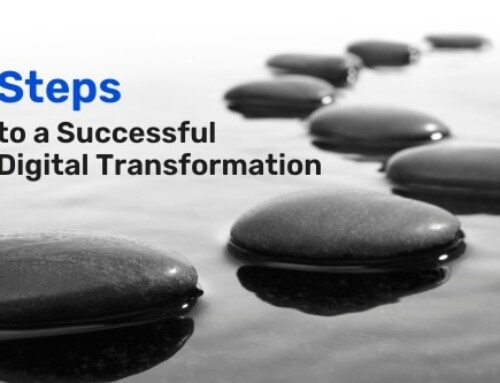With the turn of the financial year, some organisations will be gaining access to budget earmarked for new technology. Much of this may be focused on managing your member interactions and engagement, either through a pureplay CRM (Customer Relationship Management) or as part of a wider AMS (Association Management System) solution.
A scary thought then, that various numbers are bandied around for CRM failure rates, ranging from 18% to 69% such as reported in this HBR Article, probably averaging out at around a third. So how do you avoid becoming part of the statistics?
Six biggest failure factors
Having worked on many of these projects over the years and with multiple systems, in my experience the biggest contributory factors to failure are:-
- Not being focused on achieving business goals
- Lack of executive sponsorship or buy in
- Trying to do too much too soon
- Over customisation (often to avoid internal process change)
- Mistrust of the data
- People not supported to change behaviour
With that in mind here are my thoughts on how to set your implementation up for success!
Strategic focused goals
First things first, let’s remember that the purpose of these technologies is to capture and manage all aspects of your relationship with your members. By doing so you can better understand them and seek to optimise the value they gain from your membership.
This is not of course an entirely altruistic aim. The assumption being if they value your membership, they are more likely to renew their membership and may even advocate membership to others. Therefore any implementation should be laser focused on achieving the member-centric outcomes and goals within your organisational strategy.
Taking this approach will provide you true value based metrics, give focus to your implementation and enable vendors to demonstrate how their solution will help you achieve success.
Executive support and commitment
Whilst not exclusive to these projects, leadership commitment is a critical component of a successful implementation. Your senior leadership team should outline a compelling vision for how it will add value, improve the experience of members and enable staff in their roles.
A sponsor should be appointed from the senior leadership team who will be a visible and vocal advocate for the change required. They must be available to support the team in making tough decisions and remove any roadblocks when necessary.
This demonstrates organisational commitment and investment in the project and its goals, which will be essential when the project inevitably encounters some resistance to change.
Incremental steps to success
A system will usually contain multiple modules and numerous feature sets within each of those modules. All of them may seem like they will be useful in some way, but dropping all of them on users in one go will undoubtedly lead to one outcome, organisational paralysis.
Instead use your strategic goals to plan an incremental approach, deploying the most valuable modules first, in areas where it can make the biggest impact. In keeping the delivery focused you enable momentum to build and success stories to surface, further feeding the appetite for change.
With the low cost of entry for many systems these days and integrations that allow migration from one tool to another, it is even possible to treat the implementation as a chance to experiment with a few solutions. Trialling a few to see which suits you best. This also helps in opening up minds to different ways of working and encourages a culture of data driven decision making.
Configuration not customisation
Many of these tools can be highly configured to meet your business needs. This means custom fields can be created, workflows can be developed to trigger off different events and pre-built integrations with other systems can be easily set up. Depending on your chosen solution these can all be done (to a greater or lesser degree) within the standard product.
Some organisations however decide that their needs are more complex and configuration is not sufficient. Instead they develop custom coded components, built to manipulate the system to work in a way they want. This often happens when an organisation has not sufficiently challenged their existing processes to explore how they could change their ways of working.
But beware, systems are now predominantly online rather than on premise and will have new versions and updates released multiple times a year. This means every time there is a release, you (or your implementation partner) will need to test your customisations and ensure they still function the way you intended. This leads to either an expensive ongoing task to maintain them, or falling behind the release schedule leaving you unable to utilise new features, or worse still at risk of security vulnerabilities.
Sticking to system configuration and challenging your own processes, will help avoid unnecessary spend in the long run, maintain security levels and enable the use of new features as they arrive.
In god we trust, all others must bring data
The W. Edwards Deming quote refers to the importance of data measurement and analysis in business. Implementing this technology is often a first step in becoming a more data driven organisation. However, many find the data they want to put in the system is corrupted, contradictory or just plain wrong.
A key part therefore of any implementation is data cleansing. Your implementation partner can help standardise and correct some aspects of the data (capitalisation of names, standardisation of phone numbers etc). However do not assume this will be an entirely ’IT task’. Someone from the business will be required to eyeball conflicts, potential duplicates, or decide if data is valuable or not in the new system. You should also be mindful when integrating other business systems, of which will be the source of truth for any given data point.
Once you have imported your data successfully remember to make someone accountable for regular de-duplication and cleansing to ensure your it remains a trusted source for informing decision making and personalising member journeys.
People are the key to your success
Implementing a system is in some ways the easy part, getting your people to use it and change their behaviour, that is the hard part! Organisations can be resistant to change, particularly where there may be long serving staff and deeply ingrained processes. To be successful you will need to develop a compelling vision, have clear communications and be resilient in the face of challenges.
It helps to consider likely sentiment and feeling towards the implementation and identify potential motives of resistance, creating contingency plans and messaging for each. Make sure you listen to and involve your staff in the implementation, they will be more supportive if they feel they have a voice in how it’s done. Map out your influencers, early adopters and likely resistors and use this knowledge to help shape your approach.
Once underway make sure staff feel supported, be that through training, coaching or simply having capacity (within their workload) to adjust to new ways of working and be accepting of the fact not everybody will adapt at the same rate. It can also be worth considering incentivising the behaviour you want (e.g. prizes for best innovative use of the system, competition for who can attain most training badges etc).
Lastly remember to create some quick wins and harness that hard won momentum by celebrating success and communicating effectively.
There you have it, hopefully your efforts will be a success!
Spiderling Consulting specialise in helping membership organisations successfully leverage digital technologies to transform their member experience and business operations.
Should you need any help along the way, please contact Spiderling Consulting through our website or email [email protected]










Leave A Comment